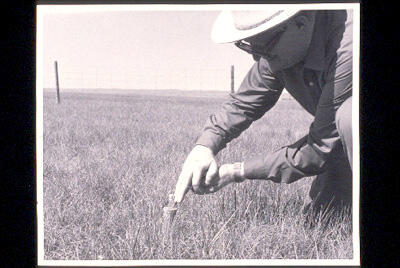
Zone du titre et de la mention de responsabilité
Titre propre
Matador International Biological Program Research Station - R.T. Coupland
Dénomination générale des documents
- Document graphique
Titre parallèle
Compléments du titre
Mentions de responsabilité du titre
Notes du titre
Niveau de description
Pièce
Cote
Zone de l'édition
Mention d'édition
Mentions de responsabilité relatives à l'édition
Zone des précisions relatives à la catégorie de documents
Mention d'échelle (cartographique)
Mention de projection (cartographique)
Mention des coordonnées (cartographiques)
Mention d'échelle (architecturale)
Juridiction responsable et dénomination (philatélique)
Zone des dates de production
Date(s)
-
1969 (Production)
Zone de description matérielle
Description matérielle
1 slide : b&w ; 3 x 2 cm
Zone de la collection
Titre propre de la collection
Titres parallèles de la collection
Compléments du titre de la collection
Mention de responsabilité relative à la collection
Numérotation à l'intérieur de la collection
Note sur la collection
Zone de la description archivistique
Nom du producteur
Historique de la conservation
Portée et contenu
R.T. Coupland, Director of Matador Project (1966-1976) and professor of plant ecology, examines grain in a field.
Bio/Historical Note: From 1967 to 1972, plant ecologists at the University of Saskatchewan participated in the International Biological Program. As part of this worldwide study of agricultural productivity, ecologists established the Matador field station for grassland research carried out by scientists from thirty-four countries. The field station was located near Kyle, thirty miles north of Swift Current, in an area of natural grassland that was potentially the best wheat growing soil in the brown soil zone of Saskatchewan. The land (three square miles) was originally leased for 21 years from the Government of Saskatchewan; the lease (for $1/year) has since been renewed and currently expires in 2009. The Matador Project involved the study of the total grasslands ecosystem, including the interaction of animals, plants, microorganisms, soils and the atmosphere. Robert T. Coupland, Head of the Department of Plant Ecology, served as Director of the Matador Project.
Zone des notes
État de conservation
Source immédiate d'acquisition
Classement
Langue des documents
Écriture des documents
Localisation des originaux
Disponibilité d'autres formats
Restrictions d'accès
Délais d'utilisation, de reproduction et de publication
Copyright: University of Saskatchewan
Other terms: Researchers are responsible for obtaining permission regarding reproductions.
Instruments de recherche
Éléments associés
Accruals
Note générale
From 1967 to 1972, plant ecologists at the University of Saskatchewan participated in the International Biological Program. As part of this worldwide study of agricultural productivity, ecologists established the Matador field station for grassland research carried out by scientists from thirty-four countries. The field station was located near Kyle, thirty miles north of Swift Current, in an area of natural grassland that was potentially the best wheat growing soil in the brown soil zone of Saskatchewan.
The land (three square miles) was originally leased for 21 years from the Government of Saskatchewan; the lease (for $1/year) has since been renewed and currently expires in 2009. The Matador Project involved the study of the total grasslands ecosystem, including the interaction of animals, plants, microorganisms, soils and the atmosphere. Robert T. Coupland, Head of the Department of Plant Ecology, served as Director of the Matador Project.

